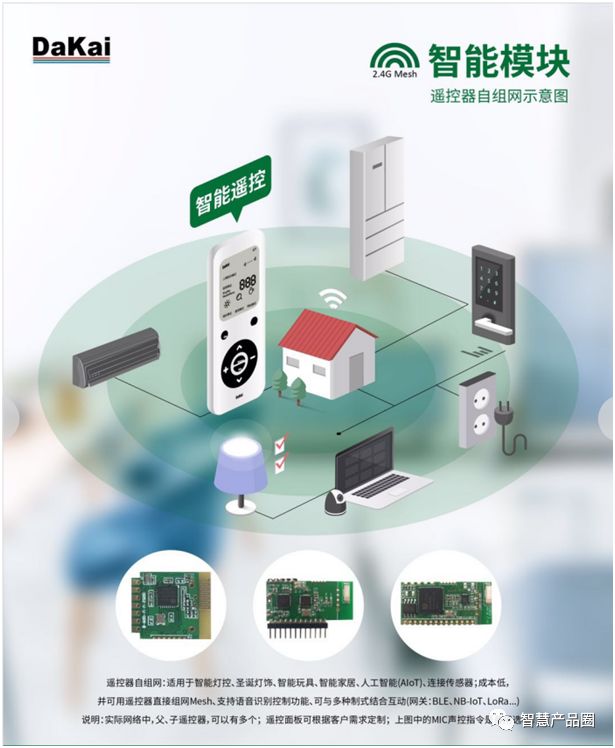
Despite a slowdown in growth in recent years, the smart home industry remains one of the fastest-growing fields over the past decade, thanks to its remarkable industrial integration and consumer-facing capabilities. There is a common belief that capital can change everything, but what should be done after capital contraction? Any new economy eventually becomes traditional; after the dividends of model innovation, there must be more detailed management and more practical technology.
When it comes to the pain points in smart homes, people’s attention often focuses on product design or overall solutions, while the communication issues in indoor scenarios are rarely considered. If a customer complains about a poor user experience with a smart product, the first reaction from them or the manufacturer might be that there is an issue with the product or system, leading them to seek after-sales service. However, customers often find that the problem remains unresolved fundamentally.
The issue is not with the product itself—products are merely carriers for the realization of communication technology functions, delivering value through human-computer interaction interfaces. The real problem lies in the contradiction between the development of communication technology, often overlooked, and the growing consumer demands. The innovation of communication technology, or the underlying communication chips and modules, is fundamental to improving the end-user experience and determining whether the future of smart homes can achieve the goal of the Internet of Everything.
The Position of Wireless Communication Modules in the Smart Home Industry
Before the advent of technologies like 5G small base stations and WiFi 6 in the smart home industry, indoor communication primarily relied on low-rate, narrowband wireless technologies that did not emphasize latency. Applications were concentrated in simple voice control and smart lighting. The position of wireless communication modules is crucial; they enable various terminal module devices to have networking and information transmission capabilities, serving as the key link connecting the IoT perception layer and network layer, making them irreplaceable.
For example, consider the smart door lock. To connect smart door locks with smart appliances, smart audio-visual systems, and home security products, and to extend more application scenarios while providing richer supporting services, NB-IoT technology is used to replace traditional WiFi communication methods, offering wide coverage, low power consumption, and low cost. The NB-IoT wireless module acts as a bridge between the external communication source and the internal circuit integration board.


▲ Schematic Diagram of Wireless Modules
The upstream industries for wireless modules include the production of baseband chips, RF chips, positioning chips, capacitors, and resistors, which are highly standardized. The downstream generally consists of IoT device manufacturers or IoT system integrators. Generally speaking, the vast majority of IoT devices that require networking or positioning need wireless modules. The downstream is scattered across various niche application fields, with the smart home industry being just one branch, often flowing to various fields through intermediaries. Module providers procure upstream materials, handle their own design and sales, and outsource production to third-party factories. Therefore, companies engaged in wireless modules tend to be low-key and pragmatic, focusing on technological updates and product innovations, with little exposure in media outlets, let alone those that solely focus on the production and design of wireless modules.
Introduction to Shenzhen Daka Industry

Shenzhen Daka Industrial Development Co., Ltd. has been dedicated to the assembly and production line (SMT & Bonding) of wireless communication modules since its establishment. Currently, its products mainly include three parts: PC peripheral keyboard and mouse solutions, RF smart modules and solutions, and FIDO fingerprint recognition solutions.
PC Peripheral Solutions
Keyboard and mouse PCBA solutions, with numerous high-stability designs released over the years, ranging from wired to wireless, from mechanical to illuminated, from 2.4G to BLE (dual-mode). They have maintained close cooperation with well-known domestic manufacturers, confirming quality under strict professional standards, with products having been mass-produced.
RF Smart Module Solutions
Over the years, they have collaborated with major foreign manufacturers to develop over a hundred RF modules (2.4G, BLE, ZigBee) that have passed various national safety certifications, enabling point-to-point and Mesh networking, from remote controls to apps, and from button controls to voice control. These can be applied in scenarios such as smart lighting control, Christmas decorations, smart toys, smart homes, artificial intelligence (AIOT), and can connect with sensors, using various standard interfaces (2.4G, BLE, ZigBee, NB-IoT, etc.).
FIDO Fingerprint Recognition Solutions
FIDO 2.0 fingerprint recognition technology is the latest standard from Microsoft, offering high security and suitable for online finance, IoT personal information management, fully supporting Windows 10 systems and remote identity recognition systems. The product solutions include USB Dongle & mouse.
New Solutions Developed in 2019
WiFi image transmission solutions, 2.4G Mesh modules, secure modules with national secret algorithms SE, USB Dongle (NB-IoT & BLE 5.0).
There are many companies like Daka in the market, diligently working and cultivating their fields; Daka’s corporate connotation, like its name, is open and grand yet practical and rigorous. To meet various product demands from customers, they can provide different solutions and play a crucial role in the entire communication and smart home market, yet they remain content to stay behind the scenes, quietly contributing without seeking fame.

▲ Shenzhen Daka Industrial Development Co., Ltd.
Chairman Mr. Li Yinghe
As Mr. Li Yinghe, the chairman of Daka, said: “I adhere to my commitment to customers, suppliers, and my employees, dedicating all my energy to product research and development and production. I thank them for their support over the past twenty years; without them, Daka could not have reached today. I also hope that the relevant domestic institutions can implement their own indoor wireless protocol standards early, strengthen industry integration, and comprehensively promote the realization of the smart home industry.”
About Us

Shenzhen Daka Industrial Development Co., Ltd. is one of the member units of the Shenzhen Smart Home Association. With the promotion of the Smart Home Association, member units unite with leading enterprises from traditional industries such as semiconductors, communications, consumer electronics, home appliances, lighting, security, wearable VR/AR, automotive, real estate, communications, elderly care, and education, including China Mobile, China Unicom, China Telecom, Huawei, ZTE, Haier, TCL, NVC Lighting, iFlyTek, and Junzheng, to promote synchronized innovation among all related enterprises within the same industrial framework. Established in 2014, and as the first national association focusing on the integration of cross-border ecological resources in the smart home industry, the Shenzhen Smart Home Association will undertake its historical mission, integrating various enterprises through in-depth interviews and research, contributing to the upcoming new era.

